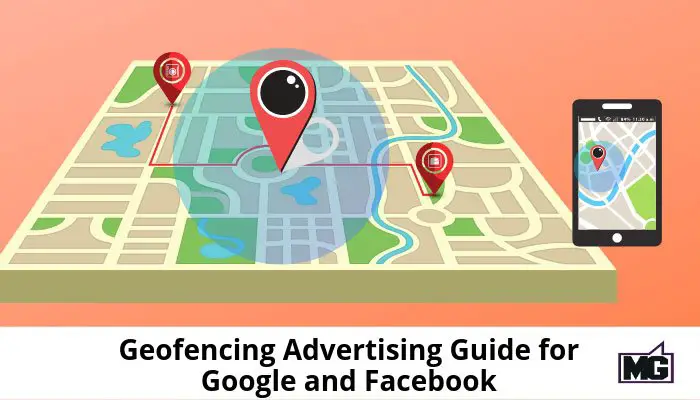
Location-based marketing is a long-proven marketing strategy. Whenever it becomes apparent that a large portion of one’s best potential customers reside in a particular geographic location, a business will focus its marketing activities on that location. Start the process with this geofencing advertising guide.
Geofencing is an innovative online marketing strategy using location. You can target your ideal customers when they are in a particular geographic area. Also known as geo-targeting, the technology makes use of location data, including; cellular data, Wi-Fi, satellite, global positioning, and Radio Frequency Identification (RFID) to target only users meeting your criteria within the specified geographic location, known as a geofence or geo-target.
Once a geo-target is identified (such as a 2-mile radius of your store), location information triggers programmed actions. For instance, a marketer may choose to send a push notification, an SMS message, or display a targeted ad to all subscribed users within that location.
This geofencing advertising guide looks at how marketers can set up and benefit from geo-fenced ad campaigns on Google and Facebook.
Setting Up a Geo-Fenced Ad Campaign in Google
To set up a geofenced campaign for Google advertising, begin by selecting the campaign you’d like to geo-fence, click campaign Settings, and select Location settings.
Google Ads allows for geo-fencing of search ads, display ads, and YouTube campaigns. Each campaign can be geo-fenced by country, state, DMA, Metro, Zip Code, and radius. This means that you can set your fence to include only consumers within a one-mile radius.
There are even more options when geofencing an AdWords campaign. In this case, you can target these locations:
The United StatesThe US and CanadaAll countries and territoriesOther locations (you’ll need to provide the locations)
As you add the locations, the potential Reach of the selected area(s) is displayed prominently so you can decide whether or not you’re reaching enough people.
It gets better. You can choose to exclude a section or sections of the selected location(s)! For instance, after selecting the entire US, you can exclude certain states or cities. When you do this, your ads do not show to people living in excluded locations.
Setting Up a Geo-Fenced Ad Campaign on Facebook
Geo-fencing in Facebook advertising is set up when selecting audiences. It is at this stage that marketers get to select which countries, states, cities, or ZIP codes to target.
One thing that stands out here is the possibility to define the radius you’d like to target within the selected location. For instance, if you choose to target Dallas, you can decide to concentrate your efforts within a five-mile radius of the Dallas Zoo.
Additionally, as with Google, you can choose to exclude locations from the selected geo-target. This allows marketers to focus their activities in locations where they are certain of getting a high ROI.
Benefits of Geo-Fencing your Ad Campaigns
According to newgenapps.com, the biggest benefit of geo-fenced advertisement campaigns is increased ROI. On average, marketers see a 20% increase in conversions. Aside from that, marketers can expect;
Better data
Data has become more important to marketing than ever; brands with better data easily outperform their competitors. Geo-fencing allows marketers to acquire quality data.
Increased efficiency
Marketing isn’t just about getting sales. It’s also about doing so with as little effort as possible. Geo-fencing allows marketers to get more with fewer resources.
Greater engagement
Geo-fenced ad campaigns also generate better engagement. Why? Because you’re reaching only people with an established interest in your products. Therefore, people who certainly want to learn more.
Improved customer relationships
If used right, geo-fenced campaigns can also help boost customer relationships. If you’re always sending relevant ads and messages, consumers will slowly become attached to your brand and start looking forward to your updates.
Patience is Key Though
Geo-fenced campaigns don’t always deliver instant sales. This doesn’t make them pointless. It just means you have to set your objectives right. Instead of aiming for instant purchases, target early-stage metrics such as impressions and reach.
The post Geofencing Advertising Guide for Google and Facebook appeared first on Mike Gingerich.
Read more: mikegingerich.com









